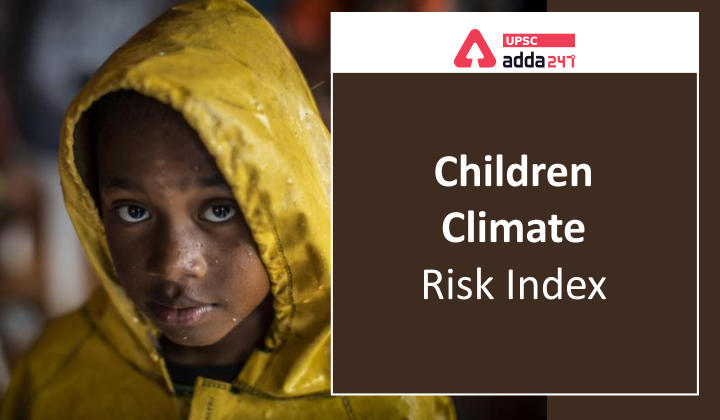Table of Contents
Relevance
- GS 1: Important Geophysical phenomena such as earthquakes, Tsunami, Volcanic activity, cyclone etc., geographical features and their location-changes in critical geographical features (including water-bodies and ice-caps) and in flora and fauna and the effects of such changes.
Context
- UNICEF (United Nations Children’s Fund) has launched the Climate Crisis Is a Child Rights Crisis: Introducing the Children’s Climate Risk Index report in collaboration with Fridays for Future.
Key points
- It is the first comprehensive analysis of climate risk from a child’s perspective.
- It ranks countries based on children’s exposure to climate and environmental shocks, such as cyclones and heatwaves, as well as their vulnerability to those shocks, based on their access to essential services.
Key findings of the Children Climate Risk Index
- Approximately 1 billion children—nearly half the world’s 2.2 billion children—live in one of the 33 countries that are classified as “extremely high-risk” countries.
- These 33 ‘extremely high-risk’ countries collectively emit just 9 per cent of global CO2 emissions.
- An estimated 850 million children – 1 in 3 worldwide – live in areas where at least four of the climate and environmental shocks overlap.
- Also, as many as 330 million children – 1 in 7 worldwide – live in areas affected by at least five major shocks.
- The 10 highest emitting countries collectively account for nearly 70 per cent of global emissions, and only one of these countries is ranked as ‘extremely high-risk’ in the index.
- The Children of four South Asian nations— Pakistan (14th), Bangladesh (15th), Afghanistan (25th) and India (26th)—are at extremely high risk due to the impact of climate change.
- The Children Climate Risk Index has highlighted the inequitable characteristic of climate change.
- Children pay the highest cost due to the impact of climate change, without contributing anything significant to the rising global temperatures.
Combating Hidden Hunger: Rice Fortification
Key recommendations of the report
- Increase investment in climate adaptation and resilience in key services for children.
- Reduce greenhouse gas emissions. Countries must cut their emissions by at least 45% (compared to 2010 levels) by 2030 to keep warming to no more than 1.5 degrees Celsius.
- Provide children with climate education and greens skills, critical for their adaptation to and preparation for the effects of climate change.
- Include young people in all national, regional and international climate negotiations and decisions, including at COP26.
- Ensure the recovery from the COVID-19 pandemic is green, low-carbon and inclusive, so that the capacity of future generations to address and respond to the climate crisis is not compromised.




 TSPSC Group 1 Question Paper 2024, Downl...
TSPSC Group 1 Question Paper 2024, Downl...
 TSPSC Group 1 Answer key 2024 Out, Downl...
TSPSC Group 1 Answer key 2024 Out, Downl...
 UPSC Prelims 2024 Question Paper, Downlo...
UPSC Prelims 2024 Question Paper, Downlo...
